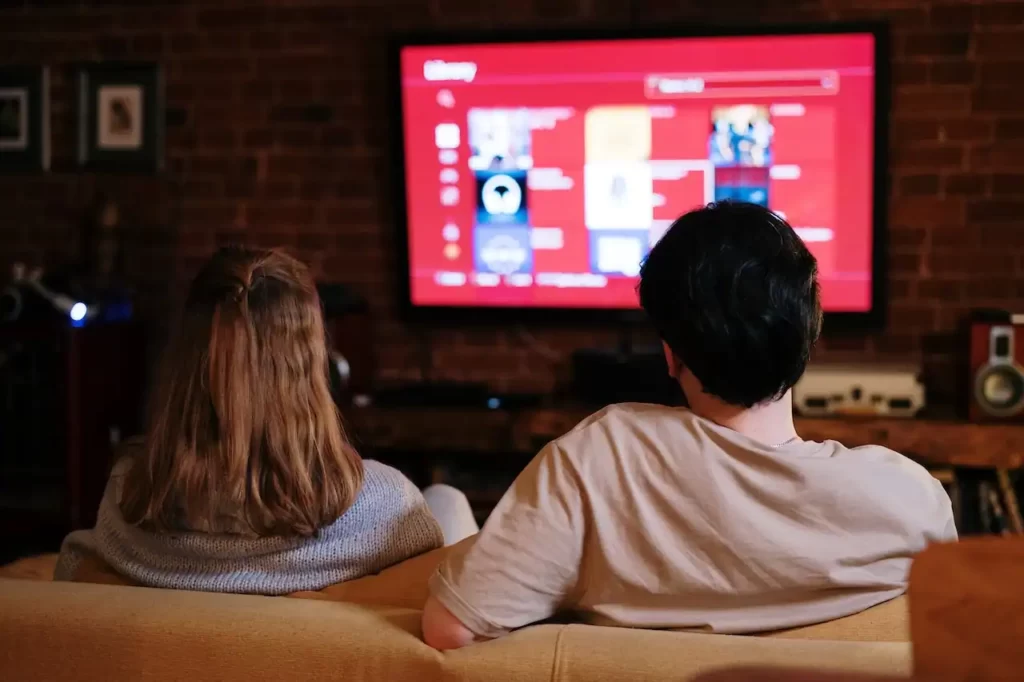Projectors have revolutionized the way we experience multimedia, from watching movies on a big screen to delivering impactful presentations. However, one common issue that often plagues projector enthusiasts is projector light bleeding or over-splashing effect.
This occurs when unwanted light escapes from the edges of the projected image, diminishing the overall viewing experience. In this article, we will explore the causes of projector light bleed and provide practical solutions to help you eliminate this problem.
Projector Light Bleeding?
Projector light bleeding, also known as light leakage, is the phenomenon where light spills out from the edges of the projected image, creating unwanted glare or reflections. This can significantly reduce the clarity and contrast of the projected content.
Projector Light Bleeding: Causes
Projector light bleeding is often a frustrating yet minor issue for enthusiasts and professionals alike that can diminish the quality of projected images. Below are some causes of Projector Light Bleed/Over-Splash given:
Improper Screen Placement
Improper screen placement is a common cause of projector light bleed and image distortion. When the screen is not correctly positioned relative to the projector’s throw angle and distance, it can result in misalignment, causing light spillage beyond the designated projection area.
This misalignment compromises image quality and clarity. To rectify this issue, meticulous attention to screen placement is essential. Ensure that the screen is perfectly aligned with the projector’s focal point, maintaining a level and perpendicular orientation.
Proper screen placement not only mitigates light bleed but also enhances the overall viewing experience.
Incorrect Keystone Correction
Incorrect keystone correction is a significant contributor to projector light bleed and image distortion. Keystone correction is used to adjust the image’s shape when the projector is not perfectly aligned with the screen.

However, improper adjustment can lead to skewed images and light spillage. So ensure the projected image is correctly aligned with the screen.
Projection Surface (Screen)
The next factor influencing the occurrence of projector light bleed is the choice of projection surface.
A subpar or inappropriate surface can absorb and reflect light unevenly, leading to scattered light spillage. This results in diminished image quality, reduced contrast, and color accuracy.
Apart from that, The type of screen used can also affect light bleeding. Yes, Low-quality or reflective screens are more prone to this issue.
Lens distortion
Lens distortion is a significant contributor to projector light bleed. Over time, projector lenses can succumb to wear and tear, manufacturing defects, or external factors, leading to irregularities in their shape and surface quality.
When a lens becomes distorted, it no longer evenly refracts light, causing light rays to scatter unevenly as they pass through the lens. This distortion results in the unintended spread of light, particularly around the edges of the projected image.
Projector Light Bleeding: Solutions
Proper Screen Placement
Proper screen placement is crucial for preventing projector light bleed and ensuring optimal image quality.
Ensure that the projector and screen are properly aligned. Measure the distance and angle between them to minimize the risk of light bleed.
When the screen is correctly positioned in relation to the projector, it minimizes misalignment issues that cause light spillage.
Keystone Correction
Keystone correction is a valuable tool in combating projector light bleed and image distortion. When used correctly, it helps adjust the projected image to fit the screen when the projector is not perfectly aligned.
To address this, users should carefully utilize keystone correction settings to ensure the projected image aligns correctly with the screen.
Precise keystone correction eliminates skewed images and prevents light spillage, resulting in a decently and visually appealing output.
Quality Projection Surface
Opting for a high-quality projection surface is a pivotal solution for mitigating projector light bleed. Specialized projection screens are designed to efficiently absorb and reflect light, minimizing scattered light and maximizing image clarity.
By investing in a quality projection screen that aligns with the projector’s specifications, you can ensure that its visuals are showcased with vibrancy, sharpness, and accuracy.
Regular Maintenance
The irregular dispersion of light due to lens distortion leads to the phenomenon of light bleed, where the image loses its crispness and sharpness, affecting overall visual quality. Regular maintenance and lens replacement can mitigate this issue.
Clean your projector’s lens and internal components regularly to prevent dust and dirt buildup, which can scatter light and cause bleed.
How to Correct Light Bleed/Over-Splash? (Advanced Techniques)
Masking
Masking, as an advanced technique for reducing projector light bleeding, involves creating a defined border or frame around the projected image. This border, typically made of black velvet tape or fabric, serves as a visual barrier that blocks out excess light from escaping beyond the intended screen area.
By effectively concealing any spillover light, masking enhances the overall contrast and clarity of the projected content. While masking may not completely eliminate light bleeding, it significantly reduces its impact, allowing viewers to enjoy a more immersive and distraction-free projection experience.
This technique is particularly valuable when dealing with challenging lighting conditions or non-standard screen shapes.
Light Shields
The next advanced technique for mitigating projector light bleeding is Light shields. These baffles or shields are strategically placed around the projector’s lens to intercept and block stray light, preventing it from spilling beyond the intended projection area.
By physically obstructing the wayward light, light shields help maintain the purity of the projected image and enhance contrast. This advanced technique is particularly effective in environments where ambient light control is challenging.
Light shields are designed to be non-reflective and matte black to minimize light diffusion, ensuring that the projected content remains crisp and free from unwanted glare or reflections, ultimately delivering a superior viewing experience.
Improved Ventilation
Apart from the above technique, Improved ventilation is a crucial technique for addressing projector light bleeding. Adequate ventilation helps regulate the projector’s temperature, preventing it from overheating, which can exacerbate light bleeding issues.
By maintaining a consistent temperature, the projector’s components can function optimally, reducing the risk of light leakage.
Proper airflow also ensures the longevity of the projector and its lamp, contributing to a reliable and efficient projection system.
You May Also Like:
- Projector Rainbow Effect? Vanish the Annoyance Now!
- Learn How To Properly Remove And Clean A Projector Filter!
- How To Clean A Projector Screen (Top Secrets Revealed!)
- Best Mini Projector For iPhone (Pick Of This Year)
- Best Cheap Projector For PowerPoint Presentations
Projector Light Bleed/Over-Splash: FAQs

Can I use any type of screen with my projector?
While you can technically use various types of screens with projectors, it’s highly recommended to use a high-quality projection screen with an anti-reflective surface.
These screens are designed to minimize light reflections and maximize image clarity, providing the best viewing experience. Using a dedicated projection screen ensures that the projector’s light is efficiently reflected toward the audience, reducing the chances of light bleeding or image distortion.
While some may opt for alternative surfaces like walls or makeshift screens, investing in a proper projection screen is the ideal choice for optimal image quality and a superior viewing experience.
How do I choose the right projector for my room?
Consider factors like room size, screen size, and ambient light conditions when selecting a projector. Consult with a professional if needed.
What is throw distance?
Throw distance refers to the distance between a projector and the screen or projection surface. It is a critical factor to consider when setting up a projector, as it determines the size of the projected image.
Understanding the throw distance is essential for selecting the right projector for your space and ensuring that the image size fits your needs.
Different projectors have different throw ratios, which specify how far a projector needs to be from the screen to achieve a specific image size.
Matching the throw distance to your space is crucial for optimal image quality and clarity in your presentations or entertainment setup.
Can I use a white wall as a projection surface?
While a white wall can work, it may not be ideal, as it can lead to light bleed due to its reflective nature. Using a dedicated projection screen is recommended.
Are there any software solutions to reduce projector light bleed?
Some projectors come with digital keystone correction features that can help reduce light bleed. However, hardware adjustments are generally more effective.
The Bottom Line
Projector light bleeding can be a frustrating issue, but with the right techniques and equipment, it can be effectively minimized or eliminated. Proper installation, the use of high-quality screens, and controlling Keystone Correction are key steps in enjoying a superior viewing experience with your projector.
Additionally, advanced methods like masking, light shields, and improved ventilation provide effective solutions for tackling light bleeding challenges in more demanding environments.
Ultimately, investing in the right equipment and implementing these strategies not only eliminates distractions caused by light bleed but also ensures that your projector delivers the stunning, immersive visuals it was designed for. Thanks for reading!
As an experienced Software Engineer in a Projection-Based Technology Company, I love sharing my Knowledge to utilize and help others to learn more about Projectors. Thus one can get the right Projector for their needs.



